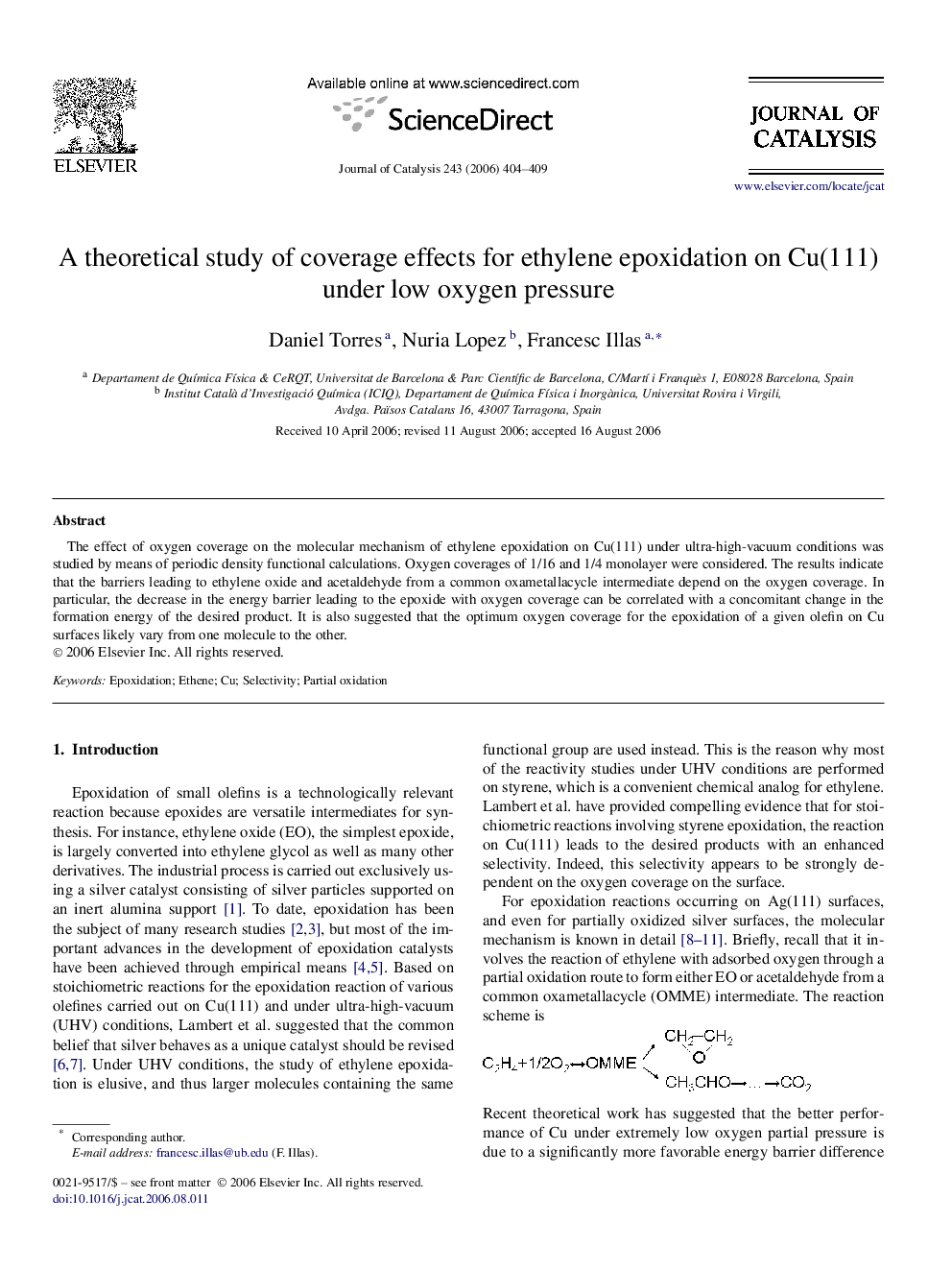| Article ID | Journal | Published Year | Pages | File Type |
|---|---|---|---|---|
| 63402 | Journal of Catalysis | 2006 | 6 Pages |
Abstract
The effect of oxygen coverage on the molecular mechanism of ethylene epoxidation on Cu(111) under ultra-high-vacuum conditions was studied by means of periodic density functional calculations. Oxygen coverages of 1/16 and 1/4 monolayer were considered. The results indicate that the barriers leading to ethylene oxide and acetaldehyde from a common oxametallacycle intermediate depend on the oxygen coverage. In particular, the decrease in the energy barrier leading to the epoxide with oxygen coverage can be correlated with a concomitant change in the formation energy of the desired product. It is also suggested that the optimum oxygen coverage for the epoxidation of a given olefin on Cu surfaces likely vary from one molecule to the other.
Related Topics
Physical Sciences and Engineering
Chemical Engineering
Catalysis
Authors
Daniel Torres, Nuria Lopez, Francesc Illas,
